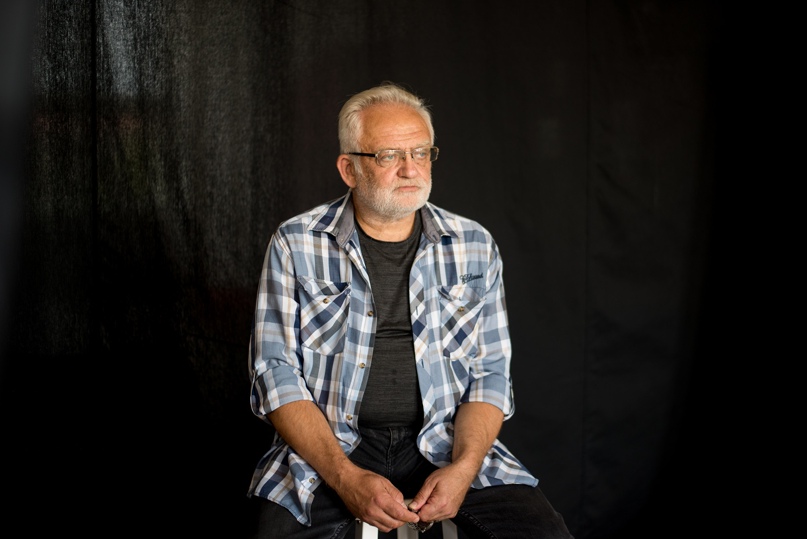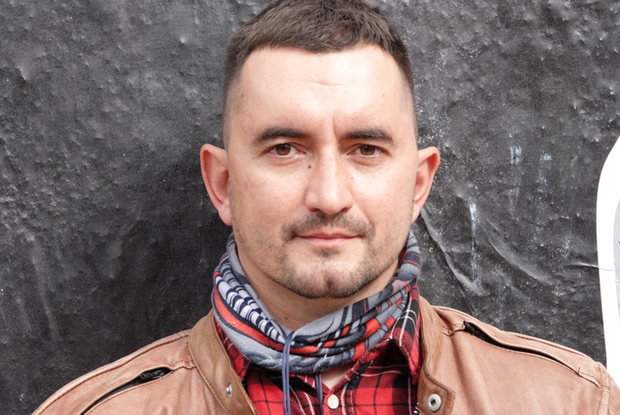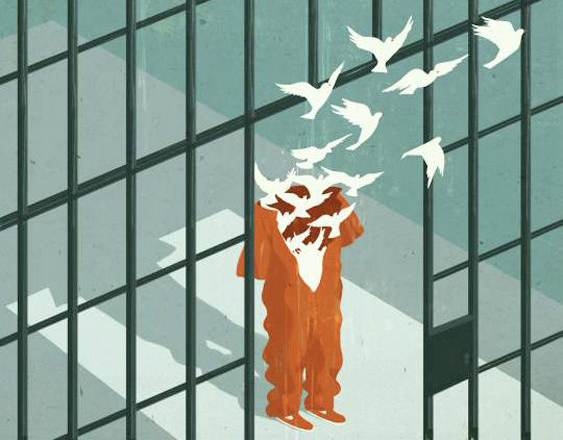Extreme forms of protest used by political prisoners in Belarus
This week it became known that Uladzimir Ipatau, a prisoner of penal colony No. 14 in Navasady near Minsk jumped out of the second-floor window. It is known that the man was persecuted under a “political” article. He has been hospitalized in Barysaŭ. Incarcerated people often have no other means but radical ones to influence the situation or at least draw public attention to it. Severe pressure, torture, and unbearable living and working conditions increasingly force political prisoners to express their protest using harsh methods.
Hunger strike
Political prisoners often resort to hunger strikes in an attempt to defend their rights. For example, well-known political prisoner philosopher Uladzimir Matskevich tried to change his measure of restraint to pledge not to leave, to complete the investigation, and set a date for the trial in this way. He went on a hunger strike on February 3, 2022, and from February 15 he kept a “dry” hunger strike without drinking any water or food. On February 16, he ended the hunger strike as “the case had moved forward”, as he told his lawyer. The trial over Uladzimir Matskevich began almost four months later.

“Uladzimir is giving a signal by his hunger strike.” Politically imprisoned philosopher refuses to take food for six days
Political prisoner Viktoryia Kulsha went on a hunger strike in protest after being placed in a cell-type facility. The woman refused food for nine days, and on the 10th and 11th days, she also refused water. She said that she was forced to dehydrate herself and refuse medical assistance in order to be placed in a hospital where she would get “human conditions”. For this, she was marked as “prone to suicide” and put on a preventive record. At first, she was assigned only two months in a cell-type facility, but after her release, the administration decided to add another three months.
Ihar Losik's hunger strike was one of the most notorious. The administrator of a Telegram-based media that often criticized the government went on an indefinite hunger strike in December 2020 to protest against the new charges that were brought against him. In solidarity with him, his wife Darya Losik joined the hunger strike—two years later she herself will be declared a political prisoner. Ihar Losik held a hunger strike for 42 days. He explained that he decided to after thousands of Belarusians asked him to stay safe “to be able to witness our victory” in a wave of solidarity. Losik’s health deteriorated as a result of a hunger strike; he experienced problems with arterial pressure and noise in the head.
In total, the blogger went on hunger strike three times during his imprisonment, he also cut his veins twice in the prison.
Deliberate self-harm
Deliberate self-harm can also be an extreme form of protest. It is often referred to as suicide attempts, but it cannot be claimed that in every such case taking one's own life was the ultimate goal. It can also be a protest against ill-treatment, an attempt to go to the medical unit where the conditions are usually better and give oneself a break, or an attempt to draw attention to the problem.
Thus, political prisoner Stsiapan Latypau at the trial said that jail officials put him in a “sweat box”, a special cell where prisoners are tortured to make them confess. Latypau then stabbed himself in the neck during the court appearance. The trial was interrupted and he was taken to a hospital where he underwent surgery; his condition was reportedly satisfactory. Latypau was taken away from the hospital and placed in the pre-trial detention center No. 1 in Minsk on the same day as he had surgery. Later in the colony, the political prisoner swallowed a blade and slit wrist to protest the actions of the facility's administration. This is how he protested against the blocking of correspondence and placement of political prisoners in punishment cells. However, it did not resolve the problems with the administration.

Political prisoner Stsiapan Latypau sentenced to heavy term in mock trial
Political prisoner Ales Pushkin also cut his stomach as a sign of protest in court. A prisoner who witnessed the abuse of Pushkin in prison told reporters that the artist used a disposable razor blade to cut a large cross on his body. The guards had seen it on the surveillance monitor and beat Pushkin with rubber truncheons, paying attention to beat him in such a way, so that no marks were left on his body at the trial.
The political prisoner was then placed in a disciplinary cell for 13 days. Political prisoner Siarhei Piatrukhin cut his wrists in protest against the terrible unsanitary conditions in the cell where he was transferred.
Legal forms of protest
In detention, people file complaints about the measure of restraint, conditions of detention, and failure to receive correspondence or petition the court during the hearing of the case. Political prisoner human rights defender Ales Bialiatskii stated at the beginning of his trial that prosecutor Aliaksandr Karol should also speak the Belarusian language in court.
“The indictment was filed in the Russian language. You can use either of the two state languages, and the court will understand you,” that's how Judge Zapasnik justified the refusal to conduct the trial in the Belarusian language.
Then Bialiatski requested an interpreter from Russian into Belarusian, arguing that he did not know Russian well enough. The court did not grant this request.
In August 2022, Mikalai Autukhovich complained about the detention conditions.The result of the complaint to the administration of Hrodna Prison No. 1 is unknown.
Also, political prisoners constantly file appeals against sentences; as a rule, they are left without substantial changes.
Protest makeup
Sometimes even symbolic actions are regarded by prison administrations as protest activities. For example, women are subjected to pressure from the administration Homieĺ colony just for wearing red lipstick, as it is regarded as a protest in solidarity with political prisoner Maryia Kalesnikava. Political prisoner Volha Klaskouskaya said that she was openly told in the colony that the management did not like it and that they believed this is such an action in support of Kalesnikava.
Klaskouskaya notes that other women inmates were also criticized for their “protest” makeup.
|
Viasna lawyer Pavel Sapelka comments:
|


















